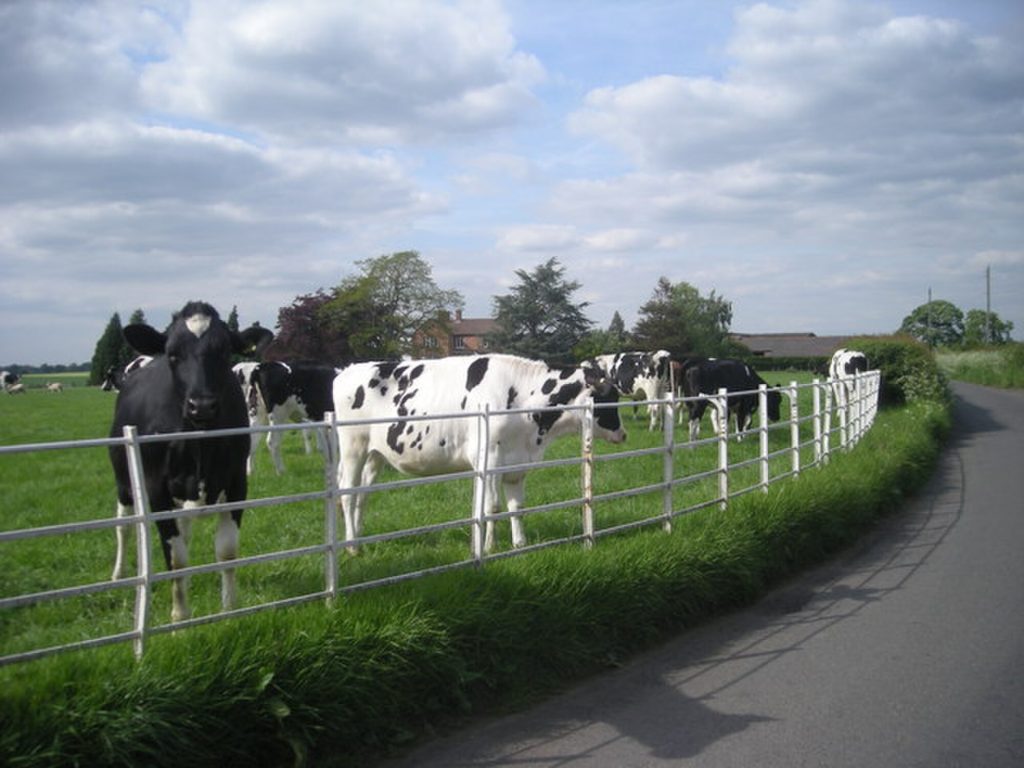
Livestock farming is a crucial branch of agriculture that involves the rearing of domesticated animals such as cattle, sheep, goats, pigs, and poultry for food, raw materials, labor, and income generation, and because it supports global food security, rural livelihoods, and economic development, understanding the different types of livestock farming alongside their meaning, importance, and problems is essential for improving productivity and ensuring sustainable agricultural practices.
Meaning Of Livestock Farming
MEANING: Livestock can be refers to domesticated animals raised in agriculture for various purposes, such as food, labour, or other products. Common livestock includes cattle, sheep, goats, pigs, and poultry. These animals are typically kept on farms for meat, eggs, dairy products, wool, and other resources.
TYPES OF LIVESTOCK FARMING ANIMALS
Below are the difference types of livestock Farming animals
- Cattle
- Sheep
- Goats
- Pigs
- Poultry (Chickens, Ducks, Turkeys).
This types of Livestock farming, also known as animal husbandry, involves the breeding, raising, and management of domesticated animals for various purposes. This agricultural practice encompasses:
Below are the Typesof livestock farming with Thier purposes
Cattle Farming
- Purpose: Meat (beef) and dairy production.
- Cattle farming involves raising cattle for various purposes, primarily meat (beef) and dairy products.
Sheep Farming
- Purpose: Sheep farming, known as sheep husbandry, involves raising sheep for meat (lamb or mutton), wool, and sometimes milk.
Goat Farming
- Purpose: Goat farming, also known as caprine farming, involves raising goats for various purposes, including meat (chevon or goat meat), milk, and fiber.
Pig Farming
- Purpose: Pork production and, to a lesser extent, by-products like lard.
- Pig farming, also known as swine or pork production, involves raising pigs for meat (pork). Farmers manage breeding, housing, and nutrition to ensure optimal growth and health
Poultry Farming (Chickens, Ducks, Turkeys):
- Purpose: Meat (chicken, duck, turkey) and egg production.
- Poultry farming involves raising domesticated birds, such as chickens, ducks, turkeys, and geese, for various purposes, including meat and egg production
LIVESTOCK PRODUCTS
We have also what is called livestock products, Livestock products encompass a variety of goods derived from domesticated animals raised in agriculture. Here are some common livestock products:
Meat products
- Sources: Gotten from Cattle, sheep, goats, pigs, poultry.
- Types: Beef, lamb/mutton, chevon/goat meat, pork, chicken, duck, turkey.
Dairy Products:
- Sources: Cows (and to a lesser extent, goats and sheep).
- Products: Milk, cheese, butter, yogurt, and other dairy derivatives.
Wool:
- Source: Sheep.
- Product: Used to produce various textiles and garments.
Egg Products
- Sources: Chickens, ducks, turkeys.
- Product: Consumed as a food item
Leather Products
- Sources: Cattle, goats, sheep, and pigs.
- Product: Used in the manufacturing of clothing, accessories, and furniture.
Honey:
- Source: Bees (beekeeping is often associated with agriculture).
- Product: Sweet substance produced by bees.
Manure:
- Source: Various livestock.
- Use: Fertilizer for crops and soil improvement.
IMPORTANCE OF LIVESTOCK FARMING
Importance of livestock farming: Beyond food production, animal production plays other important economic, cultural and social roles and provide multiple functions and services, it is a key component of the vitality of territories and an essential part of agro-ecosystems.
The following are the very importance Of livestock farming:
1. Livestock farming ensures a good supply of meat, milk, and other animal products for people to eat.
2. Livestock products provide important nutrients like protein and vitamins, helping keep people healthy.
3. The importance of Livestock Farming is vital because Many people make a living from raising and selling livestock, contributing to local economies.
4. Some types of livestock help maintain a variety of animals, which is good for the environment.
5. Livestock can work together with crops, helping with things like pest control and fertilizing fields.
6. Different parts of animals, like hides and bones, are used for various things, reducing waste.
7. Livestock, if managed sustainably, can provide a renewable source of raw materials like wool and leather.
8. Livestock farming lets farmers do different types of activities, reducing risks and making farms more resilient.
9. Natural Fertilizer: Animal manure is a natural way to make soil better for growing crops. Study about fertilizer Application here
Summary Table: Types of Livestock Farming
| Type of Livestock Farming | Main Products | Importance |
|---|---|---|
| Cattle Farming | Meat (beef), milk, hides, draught power | Provides food, raw materials for leather, and labor for agriculture |
| Goat Farming | Meat, milk, skins | Cheap to maintain, source of protein, and useful in mixed farming systems |
| Sheep Farming | Meat (mutton), wool, manure | Supplies food, clothing material, and improves soil fertility |
| Pig Farming | Pork, lard, hides | High source of protein, quick returns due to fast reproduction, and income generation |
| Poultry Farming | Eggs, meat (chicken), feathers | Provides affordable protein, raw materials for industries, and employment opportunities |
Problems Of Livestock Farming
There are several problems of livestock farming to encounter when it comes to livestock farming. Let’s look at them and at the end we can see the solutions to each of the problems.
1. Livestock can be susceptible to various diseases, leading to health concerns for the animals and potential economic losses for farmers.
2. Uncontrolled grazing can lead to overgrazing, causing land degradation and negatively impacting ecosystems.
3. Large-scale livestock farming requires significant land, water, and feed resources, contributing to competition with other land uses and potential resource depletion.
4. Improper handling of manure and waste from large-scale livestock operations can lead to water pollution and environmental contamination.
5. Fluctuations in market prices for livestock products can pose economic challenges for farmers, affecting their income and sustainability.
Solutions to Problems facing Livestock
In Solving The problems of livestock farming, the following should be considered:
1. Disease Control methods and prevention
- Implementing biosecurity measures to prevent disease outbreaks.
- Regular veterinary care and vaccination programs.
2. Sustainable Grazing Practices
- Rotational grazing to prevent overgrazing and promote sustainable land use.
- Implementing proper land management techniques.
3. Efficient Resource Use
- Implementing precision farming techniques to optimize feed and water use.
- Exploring alternative feeds and sustainable sourcing practices.
4. Waste Management
- Implementing effective manure management practices.
- Exploring innovative technologies for waste treatment.
5. Market Diversification and Risk Management
- Diversifying income sources through value-added products.
- Implementing risk management strategies to cope with market volatility.
Revision Questions and Answers on Livestock Farm
1. Question: What is the meaning of livestock farming?
Answer: Livestock farming is the rearing of domesticated animals such as cattle, goats, sheep, pigs, and poultry for food, raw materials, income, and other agricultural purposes.
2. Question: Mention four major types of livestock farming based on the animals reared.
Answer: The major types of livestock farming are cattle farming, sheep farming, goat farming, pig farming, and poultry farming.
3. Question: Why is cattle farming important?
Answer: Cattle farming is important because it provides meat, milk, hides, and draught power for farming activities.
4. Question: State two benefits of goat farming.
Answer: Goat farming provides meat and milk, and it is relatively cheap to manage because goats can feed on a wide variety of vegetation.
5. Question: What are the main problems faced in poultry farming?
Answer: Poultry farming often faces problems such as diseases, high cost of feed, and inadequate housing facilities.
6. Question: How does sheep farming contribute to human needs?
Answer: Sheep farming contributes by providing meat (mutton), wool for clothing, and manure that improves soil fertility.
Conclusion
In summary, livestock farming remains one of the most important aspects of agriculture because it provides food, raw materials, employment, and income for millions of people across the world, and by understanding the different types such as cattle farming, goat farming, sheep farming, pig farming, and poultry farming along with their unique products and benefits, farmers and agricultural stakeholders can make informed decisions that improve productivity while also addressing challenges like diseases, high feed costs, and poor management, thereby ensuring that livestock farming continues to contribute effectively to food security and sustainable agricultural development.
